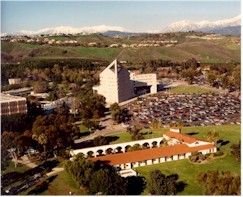Introduction
California State Polytechnic University Pomona (Cal Poly Pomona) began in 1938 as a satellite campus of California Polytechnic University San Luis Obispo. During World War II most of the student body was called into active duty, causing the school to temporarily close. Cal Poly became an independent institution in 1966. Today, more than 22,000 students attend the university.
Campus
The campus is very large, with a total holding of 1,438 acres. This acreage includes a number of learning ranches and the Voorhis Ecological Reserve. Well-known gardens on campus including a historical rose garden, a California ethnobotany garden, and 1.3 acre Japanese garden also grace the campus and attract visitors. The campus is also home to a rainforest greenhouse and an aquatic biology center. One significant potential disadvantage to life here is the fact that the San Jose Fault runs right through the middle of campus, which means that several of the buildings are significantly vulnerable to earthquakes.
Living in Pomona
Pomona is a large suburb of Los Angeles. Most students agree that Pomona is an excellent place to live in terms of access to recreational and cultural activities. The San Gabriel mountains lie just to the north, providing scenic relief and nearly unbounded recreational opportunities for students. The university’s website maintains a beach guide and a ski report for student use. The university is less than an hour from downtown Los Angeles on public transportation or by car.



